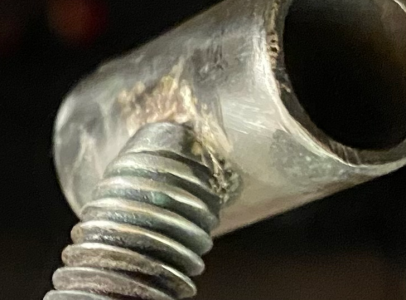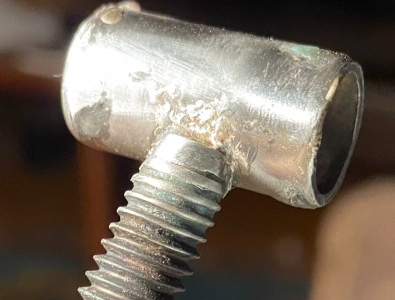- Joined
- Dec 3, 2020
- Messages
- 227
Another option that avoids repetitive re-lighting is a torch with the gasaver built-in. One is the Smith "Lite-O-Matic" AW6. I have never used or even seen one, not sure how hard they are to find, probably "very".

At one shop where I worked in the '80s, we used some Euro torches, sorry I forget the brand, but they had the gasaver function built in too. Flip the switch to Off and the flame goes out, except for a small candle-sized pilot flame, still coming out of your torch. I loved those torches, but finding one today might be near-impossible, anyone know?
Obviously you have to find somewhere to hang the torch where the pilot flame doesn't lick against anything flammable! Most torches don't have a good way to hang them, so I add a simple hook held on with a hose-clamp. Useful even if you don't have a gasaver. Paul Brodie, a youtuber, makes a fancy hook for his torch in this video, but it seems like too much work to end up with something that isn't really better than my bent rod and hose-clamp. Maybe I would do it too though, if I needed content for a youtube channel? (Not roasting Paul, he's a great guy.)
(Not roasting Paul, he's a great guy.)

At one shop where I worked in the '80s, we used some Euro torches, sorry I forget the brand, but they had the gasaver function built in too. Flip the switch to Off and the flame goes out, except for a small candle-sized pilot flame, still coming out of your torch. I loved those torches, but finding one today might be near-impossible, anyone know?
Obviously you have to find somewhere to hang the torch where the pilot flame doesn't lick against anything flammable! Most torches don't have a good way to hang them, so I add a simple hook held on with a hose-clamp. Useful even if you don't have a gasaver. Paul Brodie, a youtuber, makes a fancy hook for his torch in this video, but it seems like too much work to end up with something that isn't really better than my bent rod and hose-clamp. Maybe I would do it too though, if I needed content for a youtube channel?
Attachments
Last edited:




